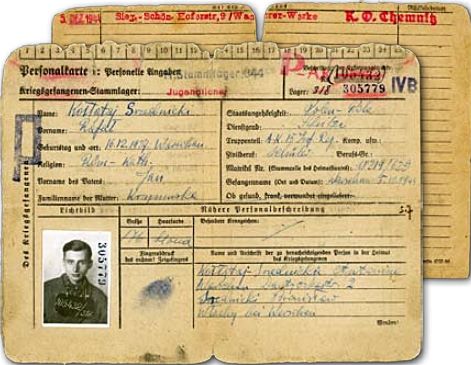confirmed the registration in a Stalag (POW camp). It contained, in addition to personal details and camp number (revised for the adoption to another camp), the date and place where the prisoner was taken, the allocation of military rank, health status and the address of relatives. Another sign of Prison Camps and camp numbers were marked in the upper right corner of the card.

The people were put in categories and this card “followed” a prisoner to another Stalag or camps. These cards were kept it in a storage, thus a prisoner could obtain the card after the takeover of the camp by the Allies or after the escape of the German staff. In this particular case we are dealing with a “personal” card of a young person (Jugendlicher), an army soldier from the Warsaw Uprising, which first went to a POW camp in Łambinowicach Stammlager (344, 318), and then to Stalag IVB (Mühlberg-Elbe).
On the back of the card there are indications of which work the prisoner should do within the working commandos (KD Chemnitz) and the name of his workplace. International law allowed that POWs could be use for labor with the condition that they were not to be used in any war-action e.g. soldiers should fit the physical capability of the person at hand. Nor should the men work in arms factories, the construction of fortifications on the ranges, the transport of ammunition, etc. In practise these rules were rarely followed. For example, in the case of the Warsaw insurgents, the Chemnitz factory recruited a group of akówek (women which were involved in the Polish underground movement) to make parts for missiles V1 and at Goslar where young prisoners arrived to, they were put in glass works, and produced glass coats, mines, aircraft fuselages, etc.